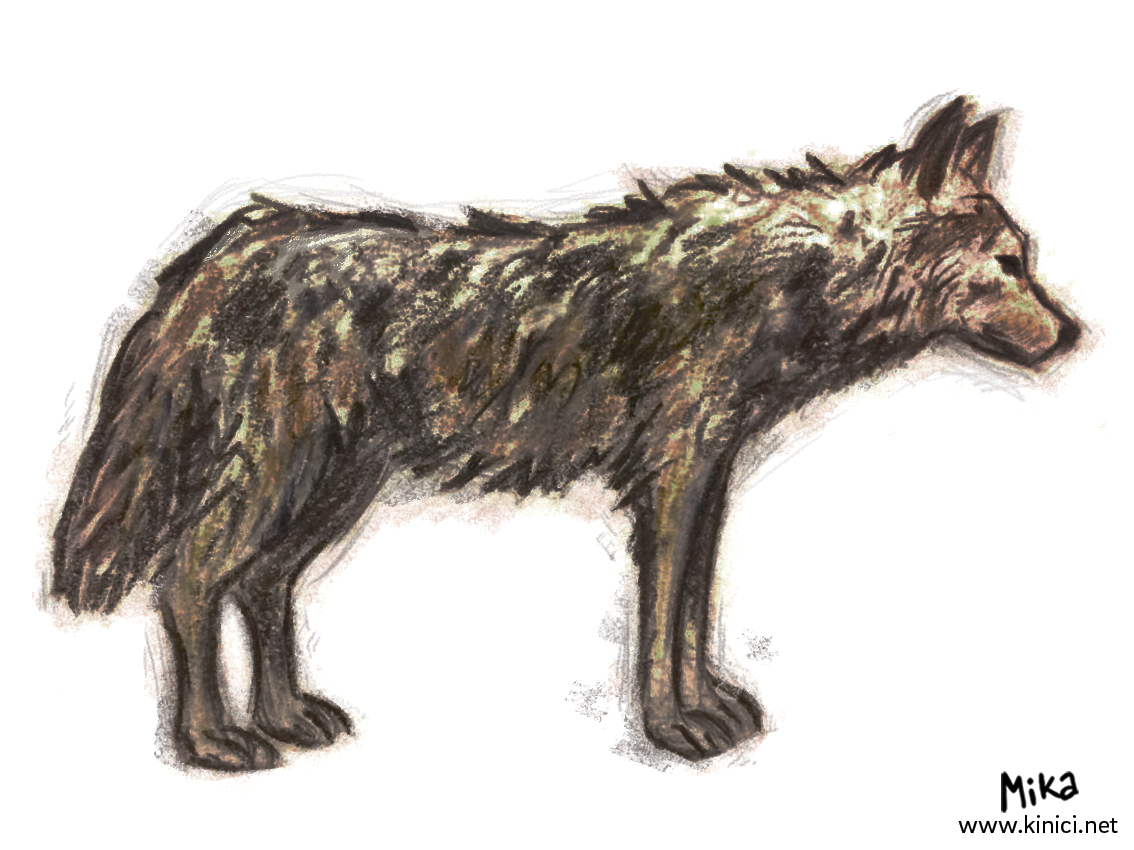 Kingdom: Animals (Animalia)
Kingdom: Animals (Animalia)
Phylum (Phulum): Chordates (Chordata)
Subphylum (Subphulum): Vertebrates (Vertebrata)
Class (Classa): Mammals (Mammalia)
Order (Ordo): Carnivores (Carnivora)
Family (Familia): Dogs (Canidae)
Genus (Genus): Canines (Canis)
Species (Species): Wolf (Canis lupus)
Wolves are one of the most social beings. Until recently it was thought that there was 24 subspecies, but now it's 17, all because of meeting and mating of different subspecies during migrations due to nomadic lifestyle and traveling long distances. Many subspecies of wolves are endangered.
Appearance
It is the biggest amongst the canids. There is huge variety in size between the specimens. Yet, you can state that grown wolf is 60–90 cm tall at shoulder and weighs 30–50 kg. The largest ones live in the north of Alaska and weigh over 70 kg. The body length is 100–140 cm, and the tail length is 30–60 cm.
It has long lean body, pretty hairy and commonly large, ragged tail which is thereby more noticeable at long distances and hung when in neutral position. Legs are long, and chest is upright and narrow. Wolves have muzzles that are long which s very important in dog communication. The most distinct difference between the sexes is in body mass. Females are 25% smaller than males and with a bit more delicate built, pointier muzzle and thiner tail, but very skilled and therefore crucial during the hunt.
Although they are referred to as grey wolves does not necessarily mean that they are all grey. They can be grey, but also almost totally white all the way to red, brown and black. The colour depends on the area that wolves inhabit. Grey or blackish coat can blend with shadows of dark forests and help sneaking in to prey (deer) in dark forests, while the white colouring of the Arctic Wolf helps him be hidden in the snow. Thickness of the fur depends on the climate.
Lifestyle
Alongside the African Wild Dog, it is the most social canid. They live in pack. They slimmer than other canids and capable of surviving without food for more than a week, which is longer than any other member of dog family. If they have access to the water their life is not in danger until they drop more than 50% of their body weight.
During winter they drink small amount of water, and rather eat snow. They do not have capability to store water in their body. The ones that live in warmer areas can drink around 2 litres of water per day during summer, and half a litre per day during winter time. Wolf faeces is usually dry, which confirms water absorption from food. Because of their thick coat they can sleep in temperatures as low as minus 46 degrees celsius.
Food
During the hunt, the type of the prey/victim is conditioned by the size of the pack as well as which animals are in the surrounding area (availability). Mostly they feed on ungulates. Favourite food for wolf pack are large animals in herds like muskox, moose, deer, reindeer, roe and sometimes even larger animals as mouflon or bison. When there is lack in this type of prey, they can eat rodents, rabbits, beavers, different birds, reptiles, hedgehogs... They are good swimmers so they hunt fish, frogs and crabs. When they are completely starved they would even eat fruits, berries, watermelons, pumpkins, cucumbers, corn, mushrooms, insects. However, they spend most of their lives with empty stomach.
Habitat
Wolves live almost exclusively in the north hemisphere.
Before now, Grey Wolf was the most widespread wild animal on the land. Once, they inhabited North America, every European country, Middle East and most of the Asian continent.
Today most of them live in Canadian, Alaskan, Russian forests including USA, some European and Asian countries, primarily in woodlands, mountains and wetlands.
